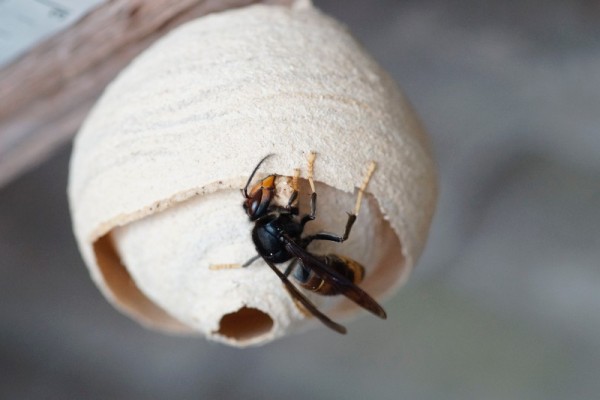Biosecurity New Zealand is continuing to ramp-up its campaign to locate and eliminate the invasive yellow-legged hornet, following confirmed detections on Auckland’s North Shore, and want to hear from anyone who has seen this insect to help confirm if there are others in the area.
Yellow-legged hornets (Vespa velutina) are a non-native pest hornet not known to be established in New Zealand. As of 18 November, 12 queen hornets, two workers, and seven nests have been successfully located and removed from the Glenfield and Birkdale areas.
Chair of the Policy, Planning and Development Committee, Councillor Richard Hills, says that everyone should be keeping a look out for these hornets this summer.
“We’re grateful that MPI has accepted our support to assist this work as they lead the response to tackling this invasive insect. While we’re hopeful the area is contained to the North Shore, we cannot be sure. So, we encourage all Aucklanders to be on the lookout for these hornets in and around their homes and also on their walks through our reserves and native bush.”
Kaipātiki Local Board Chairperson Danielle Grant encourages the community to take this seriously and support Biosecurity New Zealand in its response.
“Our community has worked hard to restore and protect the natural environment of Kaipātiki, so the detection of yellow-legged hornets is a concern we can’t ignore. These insects threaten the health of our bee populations and could disrupt the balance of our local ecosystems.
“Every report from the public helps experts zero-in on where the hornets are active, so if you spot a suspected hornet or nest, please take a photo and report it immediately to Biosecurity New Zealand.”
Samantha Hill, General Manager Environmental Services at Auckland Council reminds Aucklanders these hornets pose a risk to New Zealand’s natural environment and agriculture and urges the community to stay alert.
“The yellow-legged hornet is a serious biosecurity concern due to its potential impact on honeybee and wild bee populations as it primarily feeds on bees, wasps, and flies. It may also compete with our native insects and birds for food – and it has a painful sting.
“It’s really important that we all do our bit, stay vigilant and immediately report any sightings through to Biosecurity New Zealand. The best surveillance tool we have right now is people reporting any suspected hornets or hornet nests online at report.mpi.govt.nz or by calling the exotic pests and diseases hotline on 0800 809 966.”
How you can help
What to do if you see a hornet or its nest
Don’t attempt to remove or control a suspected hornet nest yourself or spray a hornet or nest with insecticide. It is very important for Biosecurity New Zealand to know where the hornets are active. Any attempt to control them risks pushing them away, making it difficult to find and control them.
While it may be difficult, as they are strong flyers, try to take a photo of the hornet. Images are the best way for us to assess the valuable observations made by the public.
If you think you have found a hornet or its nest, take a clear photo and report it:
online at report.mpi.govt.nz
by calling the exotic pests and diseases hotline on 0800 809 966.
Can you spot the difference between hornets and common wasps?

